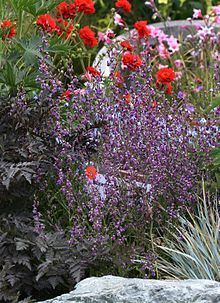Kingdom Plantae Family Brassicaceae Scientific name Streptanthus albidus | Order Brassicales Genus Streptanthus Rank Species | |
 | ||
Similar Streptanthus, Dudleya setchellii, Streptanthus glandulosus, Cirsium fontinale, Streptanthus niger | ||
Streptanthus albidus is a species of flowering plant in the mustard family known by the common name Metcalf Canyon jewelflower. It is endemic to California, where it is known only from the Central Coast Ranges and San Francisco Bay Area. It grows in open areas such as grasslands, often on serpentine soils.
Contents
Description
It is an annual herb producing an erect, usually branching stem up to a meter tall or slightly taller. There are bristly hairs around the base. The basal leaves are lance-shaped with toothed edges and are borne on winged petioles. Leaves farther up the stem are smaller and narrower, sometimes linear in shape, and toothed or smooth-edged. Flowers occur at intervals along the upper stem. Each has a spherical to urn-shaped calyx of keeled sepals about a centimeter long with curving petals emerging from the tip. The calyx of sepals may be white to purple, depending on subspecies. The fruit is a long, narrow silique which may be 12 centimeters in length.
Subspecies
There are two subspecies, both rare.
